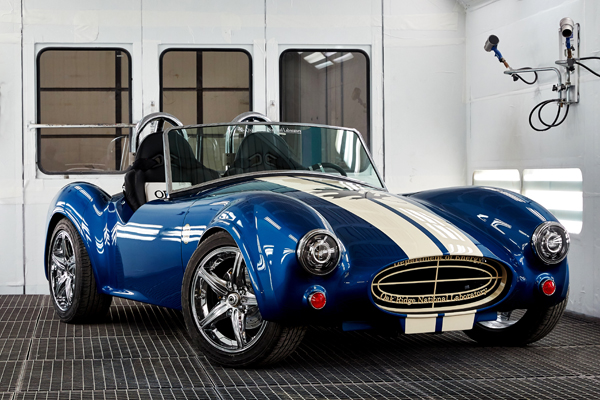
[Image above] Projects like Oak Ridge National Laboratory’s 3-D printed car prove that advanced composites have the power to change U.S. manufacturing. Credit: Oak Ridge National Laboratory
Lighter, faster, stronger—for years, it’s been the rallying cry for increased innovation in American industry.
Efforts like the Materials Genome Initiative, NIST’s Advanced Manufacturing Technology Consortia program, and the Obama administration’s manufacturing communities all have been part of the plan to get advanced materials and technologies from lab to market quicker.
Now, advanced manufacturing and advanced composites stand to be lighter, faster, and stronger quicker, thanks to an infusion of cash and commitments from government and investors.
Last week, the White House announced a new $259-million public-private partnership in the creation of the Department of Energy’s Institute for Advanced Composites Manufacturing Innovation (IACMI), which will be led by and headquartered at the University of Tennessee.
According to an Energy Department press release, IACMI “will focus on making advanced composites less expensive and less energy-intensive to manufacture, while also making the composites easier to recycle.”
The institute represents commitments from its partners ($189 million) and the DOE ($70 million), which together form a consortium of 122 manufacturers, universities, and national labs.
“This has brought together unprecedented commitment from state governments, industry, and research institutions to develop the workforce, create jobs, and increase global manufacturing competitiveness in advanced polymer composites,” says IACMI CEO Craig Blue in a UT news release.
One of those manufacturers is Local Motors, who—together with Oak Ridge National Laboratory, Cincinnati Incorporated, and the Association for Manufacturing Technology—built the world’s first 3-D printed car.
Using the same Big Area Additive Manufacturing (BAAM) machine that helped print Local Motors’ Strati, a six-person ORNL team has taken its own 3-D printed offering—a “‘plug-n-play’ laboratory on wheels” that pays homage to the classic Shelby Cobra design, which, not so coincidentally, is celebrating its 50th anniversary—from concept to car in just six weeks. The ORNL car, made of 20% carbon fiber material, will “allow research and development of integrated components to be tested and enhanced in real time, improving the use of sustainable, digital manufacturing solutions in the automotive industry,” according to ORNL.
It also demonstrates, says the DOE, the kind of collaborative work that will accelerate the process from concept to prototype and make America a manufacturing force-to-be-reckoned with.
See a timelapse video of the Shelby as it’s printed below, or click here for a short overview on the ways DOE is using advanced composites to revolutionize clean energy technology.
What do you think of this latest investment in U.S. manufacturing? Will it fulfill or fall short?
Credit: Innovations in Manufacturing at Oak Ridge National Laboratory; YouTube
